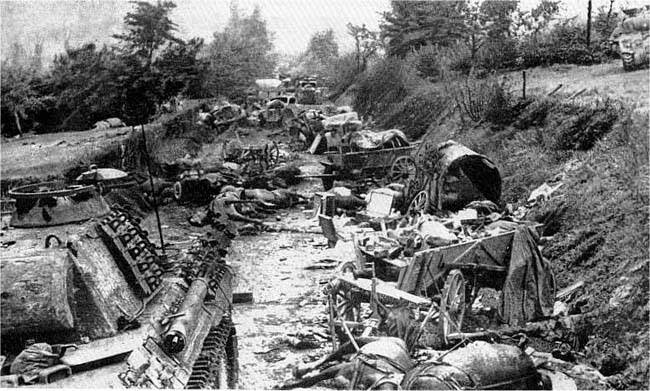The Normandy Campaign of the Second World War, 75 years ago this year, can tend to be seen by the wider public in a few ways: D-Day, Band of Brothers, the bocage and Monty not taking Caen quick enough. What is not as often remembered is that the 77-day campaign was one of the bloodiest for the western allies as they fought their way inland against the highest concentration of German Panzer divisions of the war. James Holland in his new history of the Normandy campaign looks at the myths of the campaign and reminds us that without the incredible logistics machine supporting the tip of the spear, the liberation would never have gotten very far inland at all.
Holland opens his narrative history not long after his previous book Big Week, had ended with the Luftwaffe seriously diminished. At St Paul’s School for Boys in Hammersmith on 15th May 1944, the final review of the plans for Operation ‘Overlord’ took place with all the senior staff, including the King and Churchill, present. General Sir Bernard Montgomery took the assembled higher-ups through the incredible coordinated plan that would see them land hundreds of thousands of men and all the equipment they would need, on five beaches in Normandy. In the end, Monty showed a map with projected phase lines of advance. These lines, based upon the assumption that the Germans would fight to type, showed Caen falling on D-Day and Paris on D+90. While would liberate Paris by D+77, the lines would haunt Monty.
The D-Day Planning Phase Lines
For a campaign as complex as Normandy, a deft hand is required to guide the reader through and James Holland is the perfect guide. The D-Day landings take place in three crucial dimensions, in the air, on the sea and on land. Ensuring a cohesive narrative to allow the reader to follow what is going is vital and Holland manages this with aplomb. Spending a few chapters on the logistics and the men at the top, Holland gives you the tools to understand the mammoth undertaking. From the outset of the landings themselves, with the Airborne troops dropping on the flanks of the landings and the gliders crashing down around Pegasus Bridge, Holland introduces a number of vital people who will be our eyes and ears through their experience. Whether it is Richard Todd at the bridges, Mark Alexander jumping with the 505th Parachute Infantry Division or Franz Gockel, asleep in his bunker on Omaha Beach, you are quickly drawn to these men and the vision of hell they would soon experience.
The German Army in retreat and the power of undisputed air supremacy
D-Day itself is covered comprehensively, with Holland not only explaining how the men got off their assigned beaches or managed to find their units after the drop but looks at what we have come accept versus the historical truth of the matter. Be it General Bradley later claiming he was about to pull the men off Omaha Beach and the perceived slaughter on it or the unstoppable ‘might’ of a Tiger tank, the evidence is calmly reviewed and rationalised. Holland explains how those myths came to be while showing through evidence what actually happened. It is a delicate balancing act that never becomes jingoistic and is handled consistently throughout.
Normandy ‘44: D-Day and the Battle for France, A New History, to give Holland’s book its very full title, is superb. While many will pick it up for the description of the battle to get off the beaches, the wonderfully constructed narrative of what happened next is utterly compelling. There are times when reading about the Sherwood Rangers Yeomanry and Stanley Christopherson that you feel buttoned up with his men in their Shermans and this is a true testament to Holland’s skill. While (popping my yellow Hawker Typhoon Preservation Group shirt on for a moment) I would have liked more time spent with Ken Adam and 609 Squadron and their Typhoons, Holland’s choice to show what it was like on the German receiving side of the awesome airpower the Allied brought to bear is vital to understanding the campaign in the round. The German armies were not faceless, and while not all were innocent, a 20mm cannon shell or 9mm APC round has no distinction to politics when they leave the barrel.
I finished James Holland’s book in the best possible way, I was heartbroken at what all of those men and women in uniform, or trying to just stay live in their smashed homes, went through. And yet, I wanted Holland to continue. I suppose we shall just have to wait for War in the West: Volume 3.
Normandy ‘44: D-Day and the Battle for France, A New History by James Holland is published by Bantam Press and is available now.




